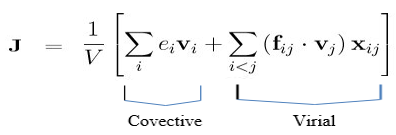Dear all,
I am looking to find out the interaction between two different molecules i.e. let say I have metal particles surrounded by Argon. Then in this case, I have LJ potential for argon-argon and EAM potential for metal metal interaction. What about metal and argon interaction? Some researchers have used Lorentz-Berthelot (LB) mixing rule to find the interaction between argon and metal, but I am unable to know why that simple rule is valid? Please suggest me the guidelines to perform the DFT in LAMMPS to find out the real potential values. Any kind of help is welcomed. Thanks.
a) what classical potential to use for your hybrid
system for the Ar/metal interactions is not
really a LAMMPS Q. You need to look in the
literature to see what people have used, then
find the corresponding LAMMPS pair style
b) you cannot perform “DFT in LAMMPS” just
using in LAMMPS. You
would need to wrap a DFT code to do this. You
can look at the USER-QMMM package which
wraps Quantum ESPRESSO. But you will
have to install QE and understand how to use
it in order to do anything useful. We are also
woking on wrapping a tightbinding quantum DFT
code (LATTE from LANL), and that will be
released soon. Again, you will have to learn
how to use LATTE to do something useful.
Steve
Dear All,
The Green Kubo formula in LAMMPS is used to determine the thermal conductivity of a single component system, i.e. single phase homogeneous system.

For multi component system the enthalpy term has to be subtracted from the convective term to get significant results according to the attached paper. The new GK formula for multi component system: 
The problem I am facing is how to incorporate this enthalpy term in the formula to calculate the correct thermal conductivity of the multi component system. Please suggest me the method to proceed in the problem. Thanks
Brownian motion.pdf (729 KB)